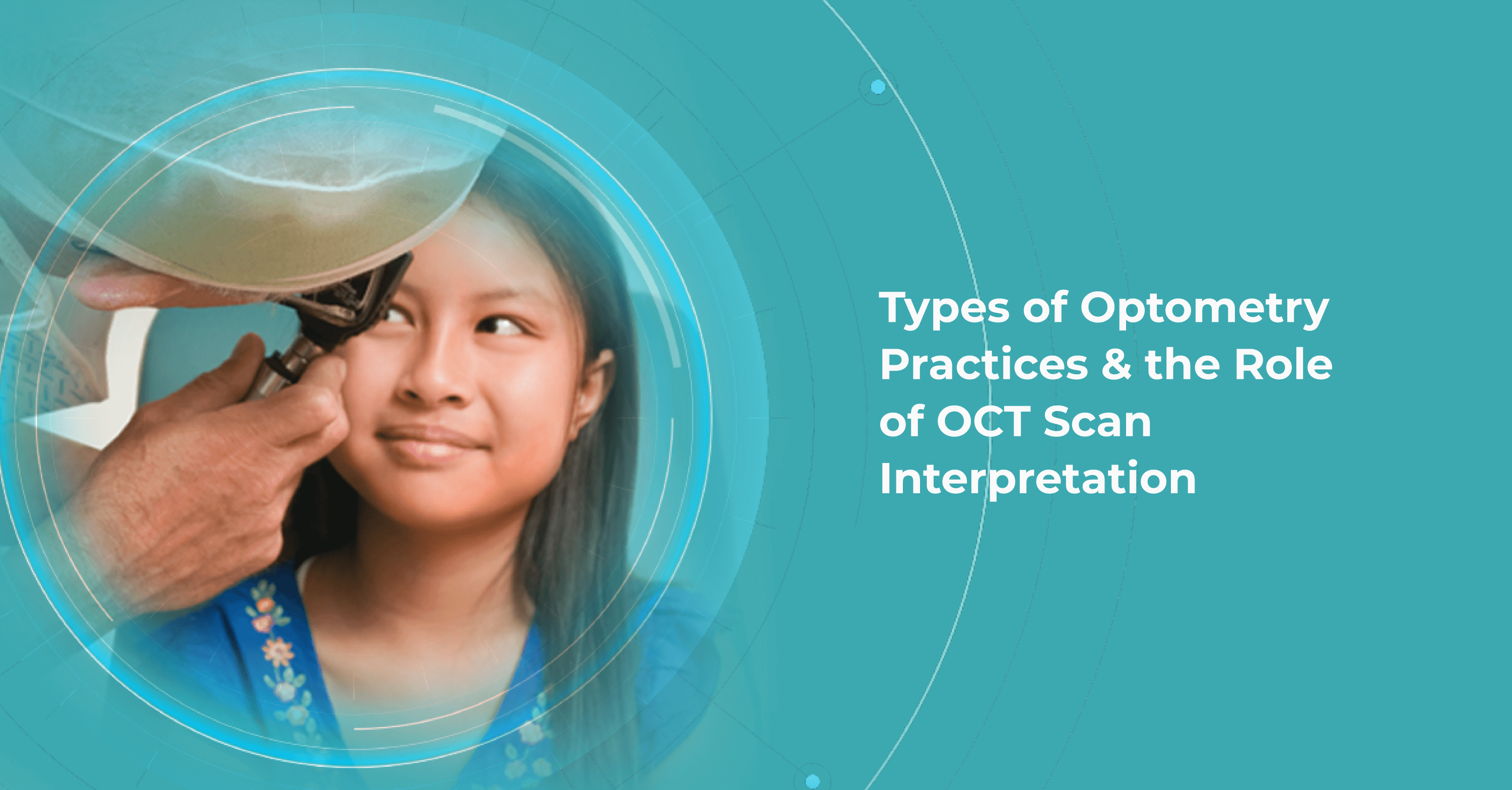

Mark Braddon
Head of Sales
Reading time
7 min. read
Various types of optometry practices have always played a crucial role in diagnosing many eye diseases and promptly referring to a retinal expert. According to Essilor International research, poor vision is the most common disability in the world today. The good news is that 90% of vision loss cases are treatable or preventable if discovered in their early stages.

However, by performing only traditional types of optometry practices, such as anterior and posterior segment examinations, optometrists may miss the complete picture of a patient’s eyes. That is why optometry specialists are embracing a new technique: optical coherence tomography (OCT) examination.
In this article, I will discuss the most important types of optometry practices and emphasize the role of OCT scan interpretation in optometry.
Types of optometry practices
When performing a full optometric examination, the optometrist should not only assess the visual acuity with an eye chart but also check their eye health. The types of optometry practices and tools are now very diverse and depend on the application field and the qualification level. Nowadays, there are a few eye examination techniques, although they may vary from country to country, that help diagnose a patient more accurately and improve follow-up care.
Ophthalmoscope eye examination
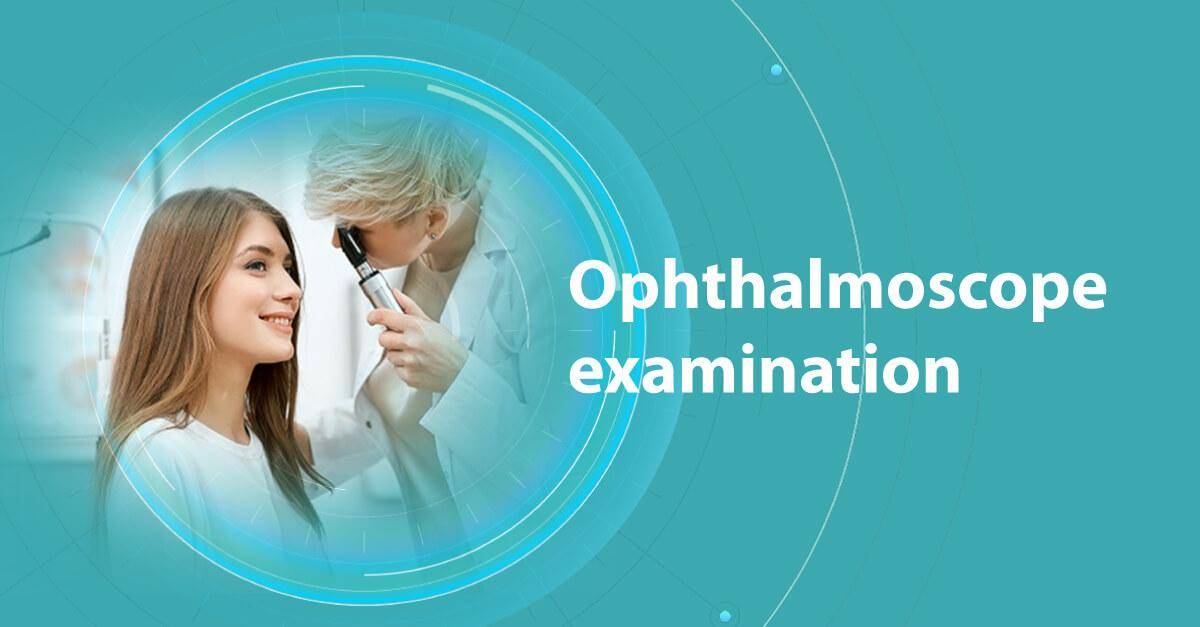
Ophthalmoscopy plays a crucial role in detecting the conditions of the retina, blood vessels, and optic disc. This is a basic eye examination procedure that optometrists usually perform to evaluate many diseases, such as diabetic retinopathy or retinal vein occlusion.
During the direct ophthalmoscopy, the optometrist shines a light into the patient’s eyes to see the inside. Binocular indirect ophthalmoscopy also involves shining a light into the patient’s eyes, however, it allows eye care specialists to take a better look at the retina and its parts that are difficult to see with other eye examination techniques. The indirect ophthalmoscopy is usually combined with pupil dilation and another optometry practice called scleral depression.
Slit lamp optometric examination
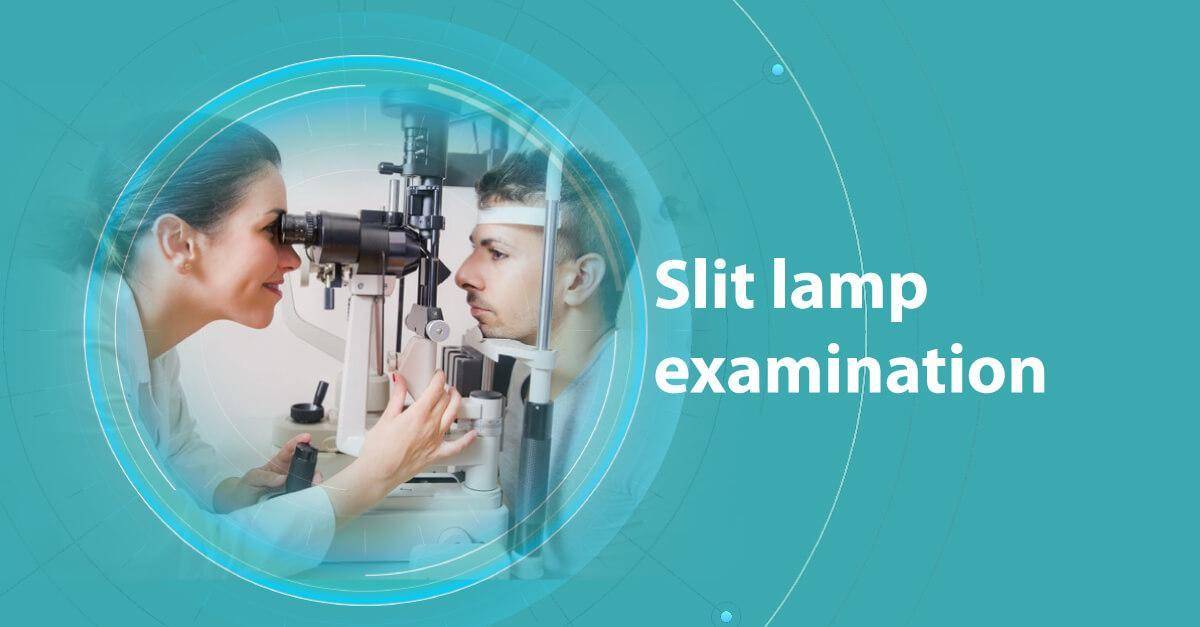
A slit lamp consists of a microscope, light source, and frame on which a patient lies their head. This regular eye examination procedure lets an optometrist focus on the eye by working with the light: expand or narrow it, increase brightness, and filter with colors. Sometimes the procedure also includes putting a few dye drops in a patient’s eye to examine some of its parts.
Slit lamp examination is pain-free and allows an optometrist to view the sclera, iris, or cornea to detect diseases related to allergies, autoimmune disorders, gout, or even melanoma. Such eye examination procedure also allows to view the retina of the eye to detect the pathological signs of diabetes. Optometrists usually use a slit lamp along with an ophthalmoscope examination.
Refraction eye examination procedure
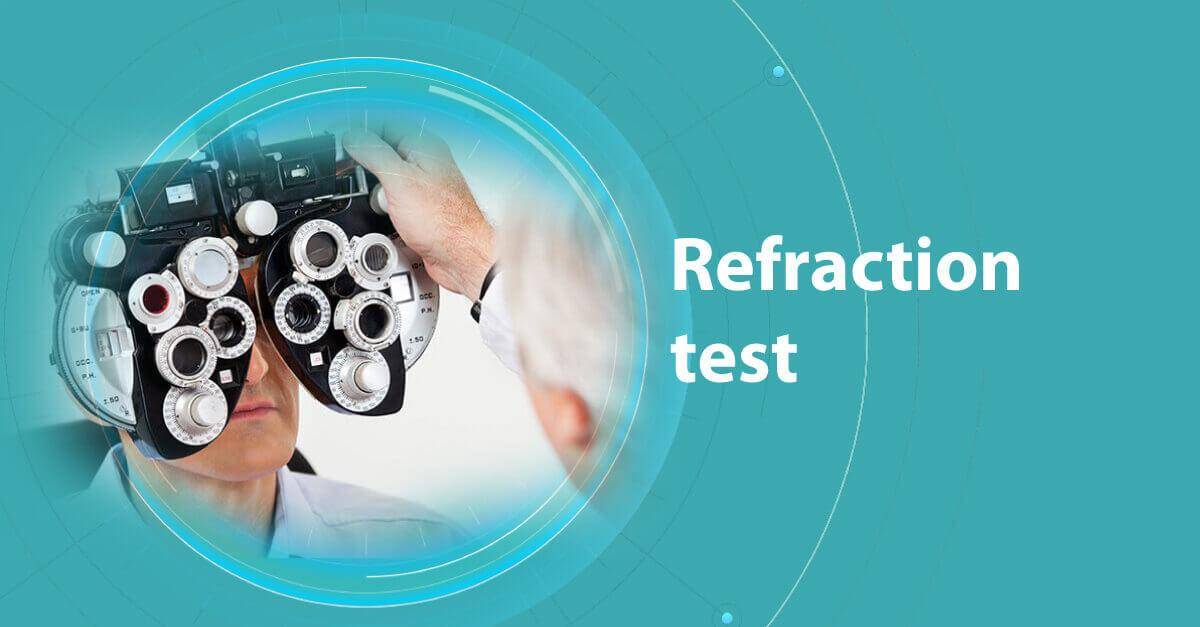
One more type of types of optometry practices is a refraction test, usually performed to detect if a patient needs glasses or contact lenses. This test made with a phoropter is quick and painless. During the optometric examination, the optometrist adjusts the power of the lenses by moving or turning them back and forth until a patient can clearly see the letters on the chart.
An optimal value of 20/20 is considered ideal vision, while a deviation means a refractive error. This may indicate that when light passes through the lens of the patient’s eye, it is not refracted properly. An optometrist can detect astigmatism, myopia, presbyopia, and a refractive eye problem during a refraction test. This, in turn, helps detect macular degeneration, retinal vein occlusion, retinitis pigmentosa, and retinal detachment.
-
Cycloplegic refraction
Sometimes the optometrist may decide that the normal refraction is insufficient or inaccurate due to error. During refraction, the patient may unconsciously focus, affecting the test result and showing nearsightedness or farsightedness.
Then the optometrist performs cycloplegic refraction using cycloplegic eye drops. This eye examination procedure paralyzes the muscles that focus the eye to determine the refractive error. Сycloplegic refraction exam is especially useful for children, patients with pre-presbyopia, and LASIK patients.

-
Autorefraction
Autorefraction is an eye examination procedure performed using a special autorefractor device, also called an optometer. This exam automates the estimation of refraction and determines its error. Usually, the indications for the procedure are myopia, farsightedness, astigmatism, presbyopia, and prescription of glasses and contact lenses.
Retinoscopy optometric examination
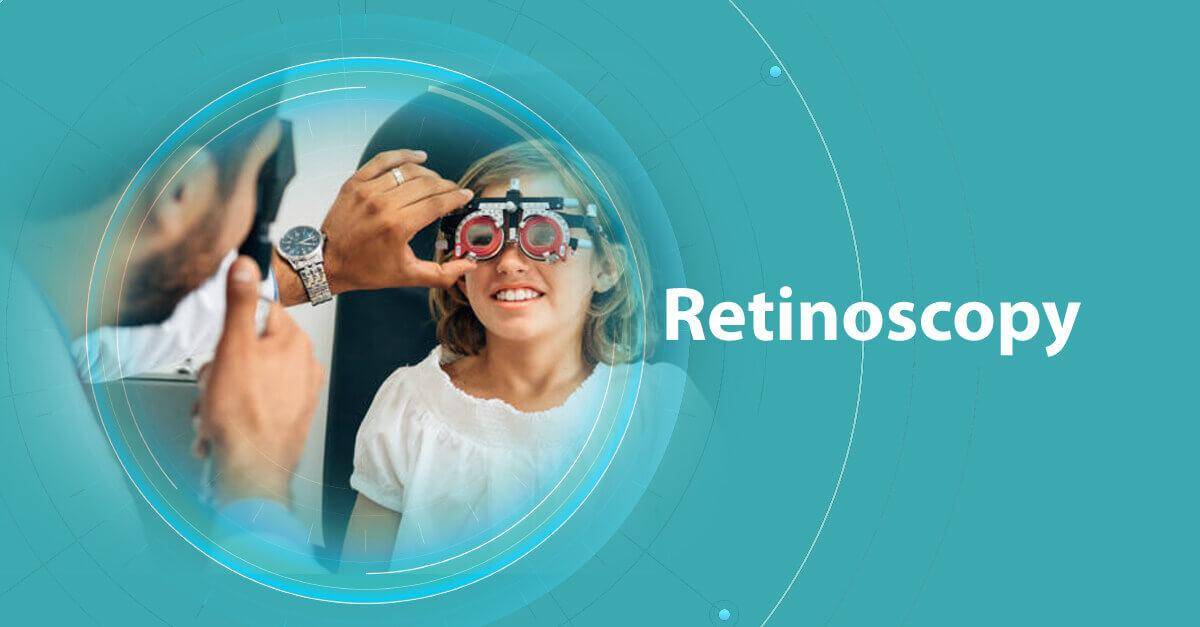
Among different types of optometry practices usually performed to detect farsighted, nearsighted, or astigmatism, and the need for glasses is retinoscopy. This procedure is pain-free and quick. Using a retinoscope, the optometrist projects a beam of light into the patient’s eye. This light moves along a horizontal and vertical trajectory, reflecting off the back of the eye. The eye care practitioner observes the movement of light with the help of lenses they place in front of the eye. Then the optometrist changes the lens’s power and tracks the reflection’s direction and pattern. This test is performed to find a possible anomaly.
Role of optometry OCT practice
The types of optometry eye examination techniques described above are fundamental for any diagnosis. However, adopting modern optometry OCT practice systems already complements clinical practice perfectly and has the prospect of widespread distribution among optometrists worldwide.
Knowing that the prevalence of some eye conditions, such as Myopia or Dry AMD, has increased with the pandemic, specialists need to implement modern methods and eye examination techniques in their clinical practice. Current optical coherence tomography devices allow optometrists to perform consistent analysis and furthermore have special software and a database for storing patient information. Compared to other retinal examination methods, such as fundus photography, OCT scan interpretation enhances patient care by improving the quality of diagnosis.
High-quality information provided
Modern optometry OCT diagnostics allow optometrists to quickly obtain a huge amount of information about the patient’s eye. Built-in software collects images and compares results to normative databases. This allows optometrists to easily track patient progress or regression and generate reports that ophthalmologists or surgeons may need for follow-up treatment.
For example, suppose a patient has a disorder with the optic nerve, macula, or vascular system. In that case, the optometrist can send data to the ophthalmologist promptly, highlight important aspects of the patient’s condition, and provide abnormal OCT scan results for additional clarity.
No missed pathologies
Optometry OCT practice provides higher diagnostic standards, ensuring fewer pathologies or pathological signs are missed. OCT scan interpretation helps detect early vision-threatening eye conditions. For example, the system can detect AMD in the early stages, which is crucial for preventing vision loss due to subretinal fibrosis. With optometry OCT practice, the thickness of the retina over the macula and posterior pole can be analyzed to detect retinal edema or atrophy. Optometrists can also confirm diabetic macular edema (DME) and decide on further treatment based on the results of its examination. In addition, OCT perfectly visualizes the retinal pigment epithelium (RPE) and choroid.
More patients served with comfort
By better visualization of the eye structures, optometrists provide each patient with an individual approach. This level of service ensures comfort for patients and trust for a specialist. Optometry OCT practice allows optometrists to avoid routine work and devote more time and energy to patients. More importantly, the OCT scan interpretation helps establish contact, allowing patients to understand the examination and treatment plan.
Impact of AI on optometry OCT practice
OCT scanning allows optometrists to accumulate large amounts of patient data. However, a large amount of information can be difficult and time-consuming to process, even for experienced specialists. The collaboration of optometry OCT practice and artificial intelligence (AI) gives optometrists a unique opportunity to analyze a large amount of data and make better clinical decisions. Here are 4 key benefits of AI which completely transform the OCT scan interpretation process for optometrists:
- Gaining confidence. 16.3% of interviewed eye care practitioners still avoid using OCT in their daily practice because of the lack of confidence in their interpretation skills. However, with AI, this problem will be solved.
- Fast examination. Implementing AI-powered management systems in daily clinical practice reduces the time optometrists have to spend on non-pathological scans.
- Clear diagnosis. 59% of specialists acknowledge that they have to interpret controversial scans around 1-3 times a week. AI helps optometrists with controversial and abnormal OCT scans, so they don’t need to guess the diagnosis.
- High diagnostic standards. 30,5% of interviewed ECPs admit they are unsure how often they miss pathologies. When working with OCT, AI systems ensure no minor, early, rare pathologies are missed.
OCT scanning allows specialists to easily, quickly, and safely obtain many images, producing a lot of data. As AI aims to work with large volumes of data, more and more AI models are being created to help optometrists.
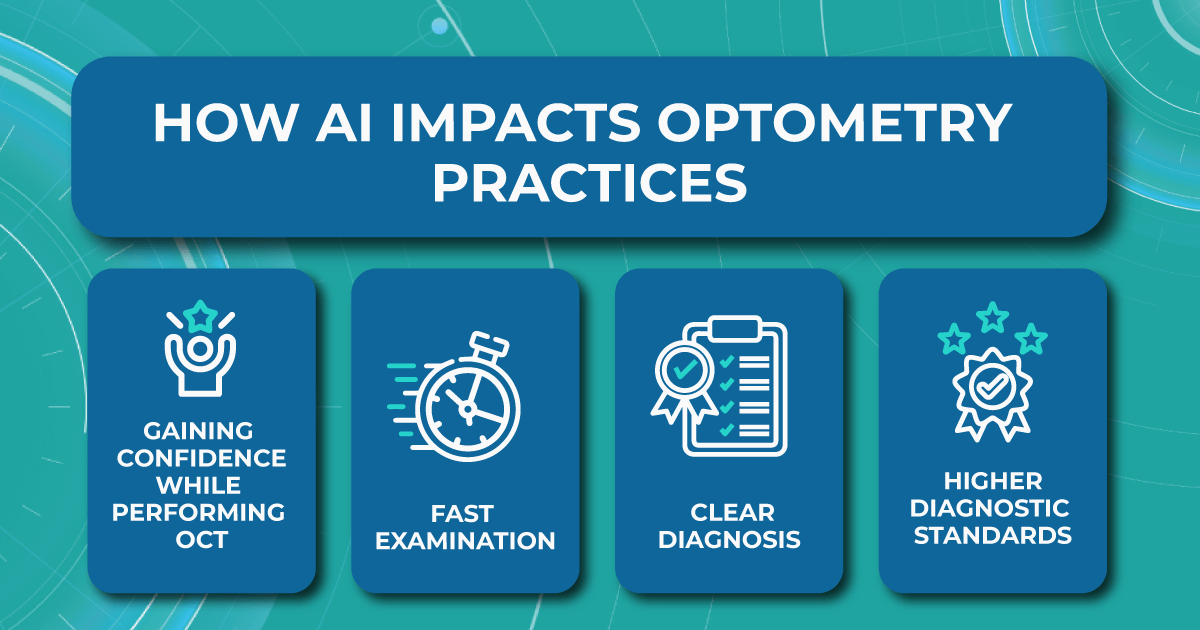
Altris AI has developed an artificial intelligence platform to assist ECPs during their optometric examination and already plays a significant role in diagnosing and treating eye diseases using optometry OCT techniques. We have trained an AI algorithm on 5 million OCT scans collected in 11 ophthalmic clinics with a 91% accuracy. Watch a short video to see how to detect pathological signs with Altris AI:
https://www.youtube.com/watch?v=Ehhwl6Q0O-A&ab_channel=Altris
Future of optometry oct practices
The integration of OCT into the clinical practice of optometrists is beneficial and shows great promise. However, to gain the most accurate diagnosis, the interpretation of scans should be carried out in cooperation with other optometry eye examination tools. Optical coherence tomography implemented with other eye examination techniques, including gonioscopy or slit lamp biomicroscopy, boosts diagnostic performance and provides valuable data.
Optometry oct practices are becoming routine for providing improved examination and patient care. This technology can also improve the confidence of eye care specialists. Detecting many pathologies using optical coherence tomography has an immediate practical benefit. Due to its high resolution, it defines and identifies early pathological signs before patients even notice any symptoms.
